Retired Racing Greyhounds and Children
Australia has one of the highest pet-ownership rates in the world, with over 63% of households having a pet.
The relationship between children and pets can provide wonderful benefits including introducing the child to having responsibility, and developing the important skills that come with interacting and caring for another being. Pets are such a part of our culture, that over 83% of people have had an animal companion during their childhood years so it is not surprising that many parents feel their family will not be complete until they have a pet.
Owning a pet dog can be a fantastic experience for the entire family, but parents need to be fully aware of the responsibilities of bringing a dog into the household, especially one with young children, and need to work actively to ensure that the experience of both the children and the dog are good ones.
‘..the biggest risk factor in dog bites is lack of parental supervision.’
Dog bite statistics tell us that young children are especially at risk from serious dog bites due to their size and behaviour. No parent wants to witness a bite on their child. Unfortunately, the biggest risk factor in dog bites is lack of parental supervision. The media is full of horror stories where parents left their young child unattended with the family dog, often for extended periods, then were shocked when things went wrong.
Although retired racing greyhounds can make fantastic family pets, it is important to remember that they probably have not had a lot of exposure to children during their life as a race dog and as a result may find some things children do a little frightening.
1 Statistics from the Petcare Information and Advisory Service 2009
Aim to make the children and dog safe
If we better understand dog behaviour and body language, and then educate and teach our children how to behave around the dog, and we SUPERVISE them both, most of these accidents can be avoided. As a parent it is your responsibility to ensure your children are safe, visiting children are safe, and that your adopted greyhound is safe so you will have plenty to do!
Watch your dog’s body language constantly for signs of stress or arousal. Most dogs give subtle signals about how they are feeling, and it is up to us to see them and deal with the situation accordingly. Things like licking the lips, panting, dilated pupils, shaking, or even a ‘worried face’ can indicate the dog is no longer relaxed and calm. If you see any of these signs, it is time to step in before things escalate. In most cases, moving the dog to another area, or giving it a ‘time out’ in a safe place away from the children will allow him to settle down and return to a relaxed state.
Teach your children how to interact safely with your adopted greyhound
You will have to supervise your children interacting with your adopted greyhound. They should be taught the right way to approach, pat and play with a dog, and will also need lessons on interacting with strange dogs as well. This is because they may automatically assume all dogs are like theirs, when in fact many dogs are not well socialised to children, or may be fearful of the way they approach and interact.
A good behaviour to encourage is that the children should always ask the owner first if they can approach and pat the dog. If they cannot see an owner, they are not allowed to approach the dog.
All dogs may find ‘human’ greetings frightening – children often want to ‘hug’ a dog when they say hello, but this is very foreign behaviour when viewed from the dog’s point of view. No other dog would ever hold them with intense contact with their face close and not let go! For this reason, it is very important that children learn the correct way to greet a dog and are discouraged from behaviours that will potentially put them at risk.
Avoid hugging, kissing, or putting faces close to the dog’s face.
Staring or intense direct eye contact should also be avoided as this is very threatening behaviour, and something dogs would only do to each other if they wanted to start a fight.
The kids are having their friends over….
It won’t be long before your children ask to have some friends over to play, or you may just have relatives or neighbours call in with their children. Don’t assume anyone else has taken the time to train their children like you have. Other people’s children may be rough, or even cruel to dogs, or may be scared or frightened as they do not have a dog themselves.
This is a time to pay extra attention to what is happening. When you have multiple children games get crazier and there is usually lots of running and squealing. This may not be an ideal place for your dog as it might get frightened or even highly excited itself. Once a dog is aroused, they are more likely to behave impulsively and this can lead to problems. Maybe the dog is best confined to a quieter area when there is a lot of activity in the yard or house.
Having separate ‘zones’
It is important that your adopted greyhound has a quiet place where it can relax, away from the kids. By having the dog and children in separate areas at certain times, it is possible to manage them both. Having set times for play and quiet can help your greyhound adjust to its new life, and help the children understand the dog is not a toy that is available for them whenever they want.
There are other times you may want to separate your greyhound and the kids. Any time you cannot be there to supervise – the greyhound and children should be in separate areas. When the greyhound is sleeping and at meal times (both dog and human) are other times where the greyhound should be ‘away from the action’.
Greyhounds are used to being left on their own in their kennel with no other dogs or people around when they eat their meals, so they are not used to having children or even adults near their food bowls. As a result, they may react when people approach them whilst eating. Some greyhounds may even guard their food, which means they might growl or snarl if someone appears to be coming to ‘steal’ their dinner.
Greyhounds tend to sleep very soundly and can startle if woken. They are not used to sharing their bed, and may just need to get away from it all and have a rest.
It is important that the children are taught to leave the greyhound alone both when it is sleep and when it is eating or chewing on a bone.
Wash your Hands...
Children also need to be educated in good hygiene around dogs. Teach them to wash their hands when they are finished playing with or patting the dog, and encourage them to help you ‘pick up the poo’ so that there are not dog faeces all over the yard. Children are most at risk from catch any zoonoses (disease that can be transmitted from the pet to humans) but washing their hands after playing with the dog, picking up the faeces, and regular worming of the dog will go a long way to prevent any problems.
Remember: It is up to you to SUPERVISE all interactions between your adopted greyhound and children.
Need to learn more?
Visit the ‘We are Family’ website – A guide to nurturing the child and pet relationship from pregnancy to preschool. http://dpipets.milura.com.au/
Meet our dogs ready for adoption
All greyhounds adopted from GAP are de-sexed, vaccinated, microchipped, wormed and health checked.
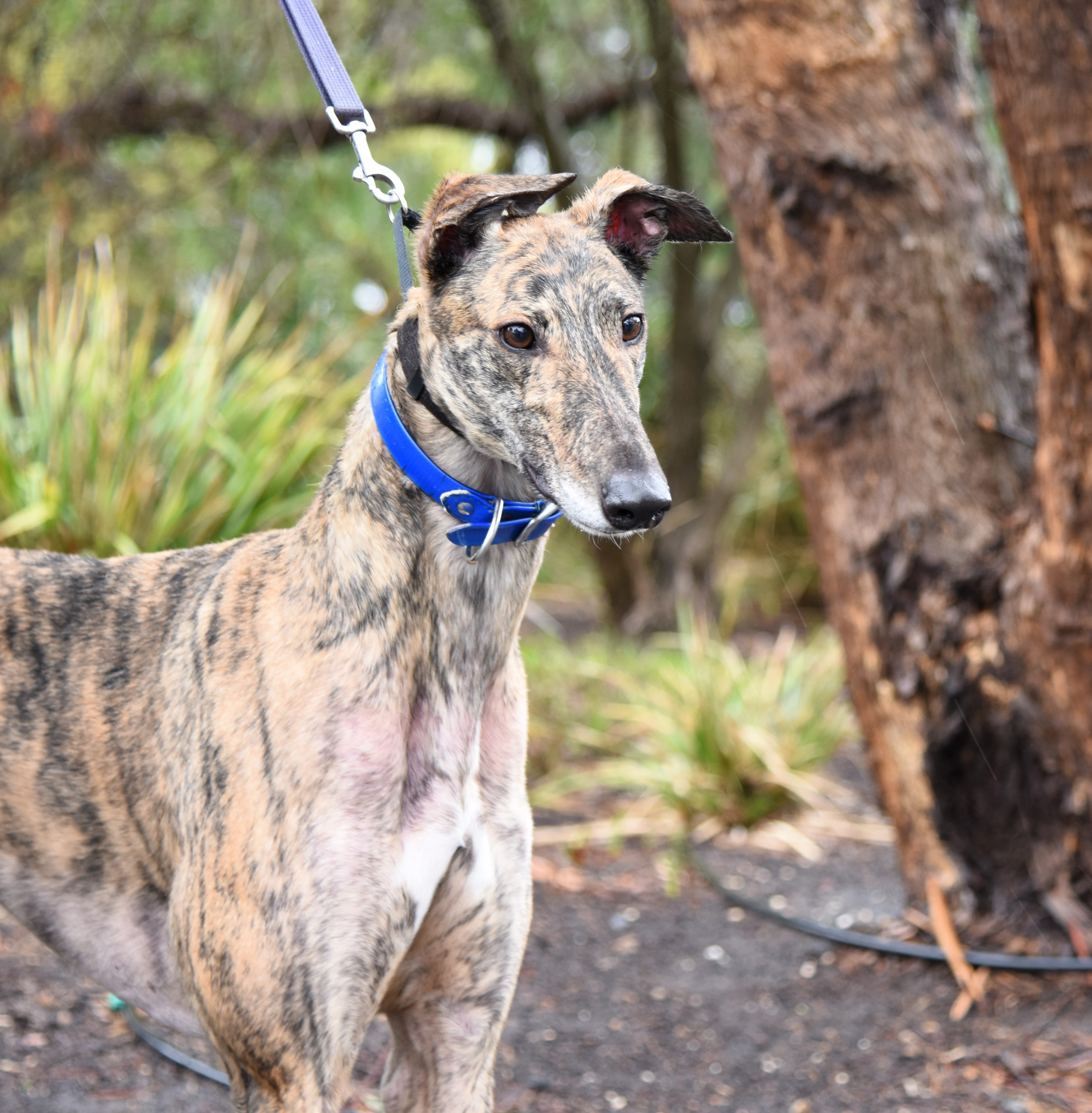
Harris
Talk about a big softie! This lovely boy is such a sweetheart, he leans into you pats and looks up to you with his big eyes. He can be a little shy in new environments but soon bounces back to his joyful self! We think he may suit many households as long as there is a nice yard for him to relax and explore in.

Bobby
Bobby is a lovely young man, just look at his beautiful light-coloured eyes, they seem to stare into your soul. Bobby is a social, friendly and affectionate boy who is keen to move into his furever home. He may suit living with or without a canine pal of similar size and children aged 10years and older.

Bertha
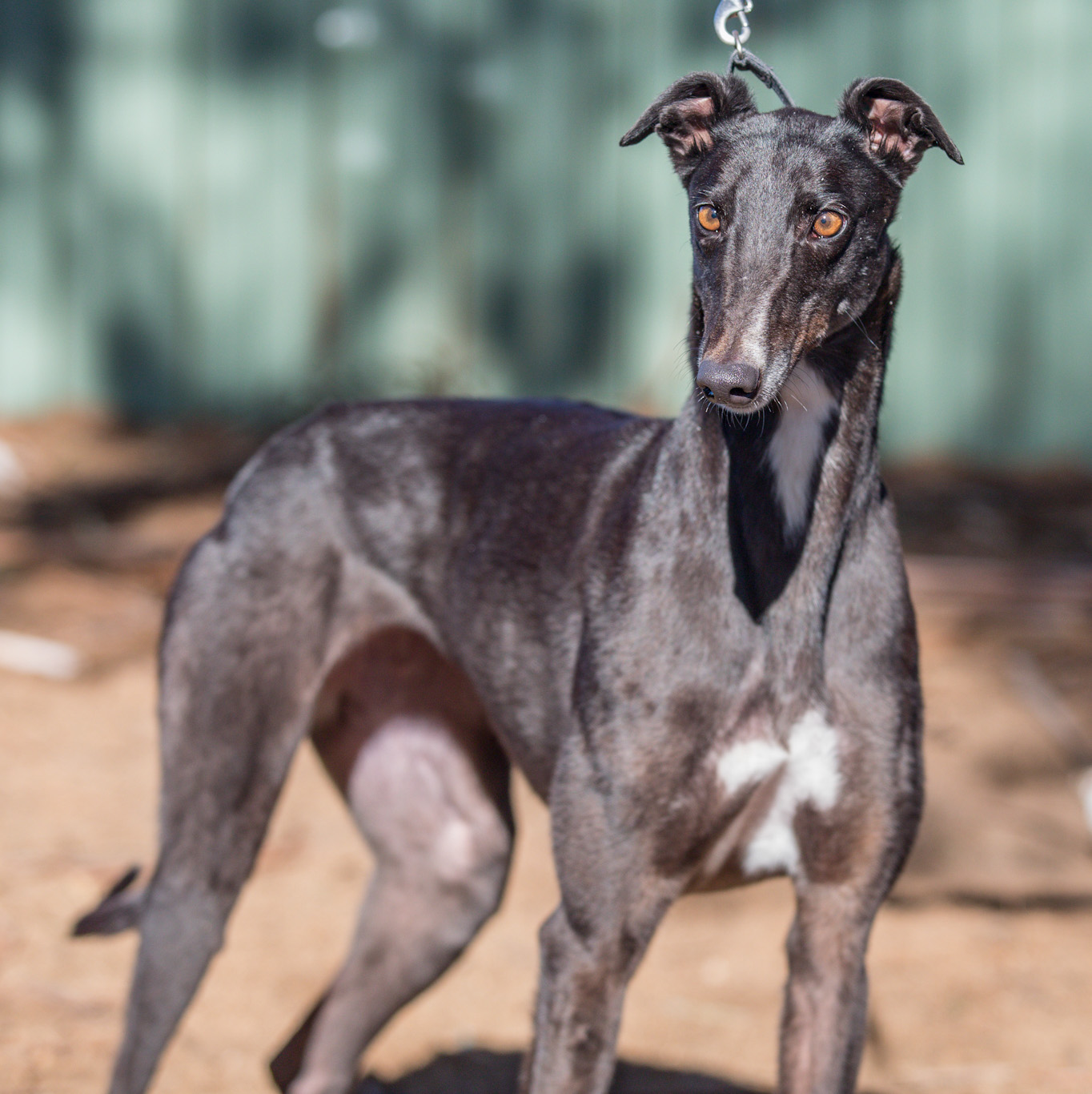
Boston
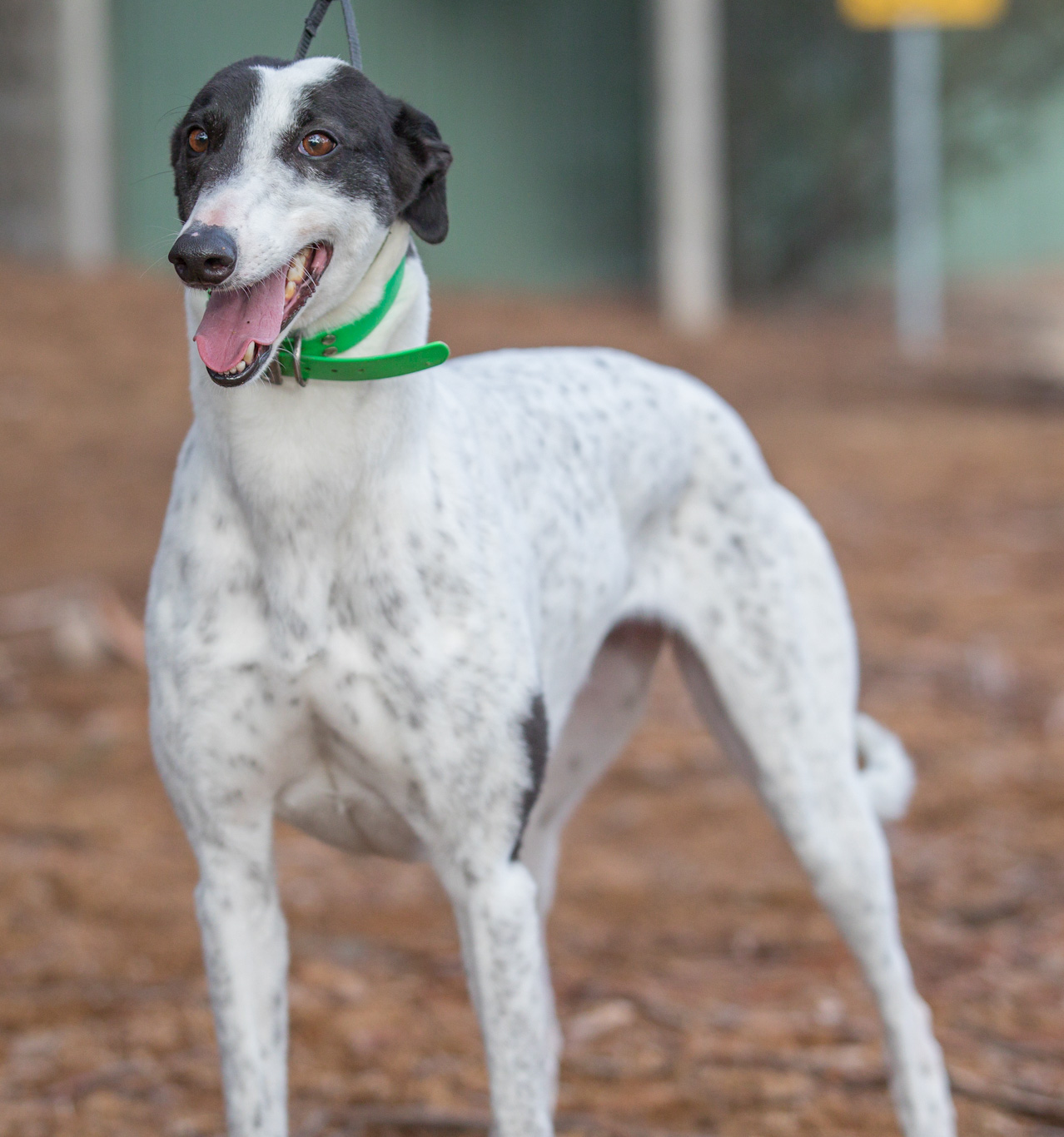
Willow ARP

Diesel
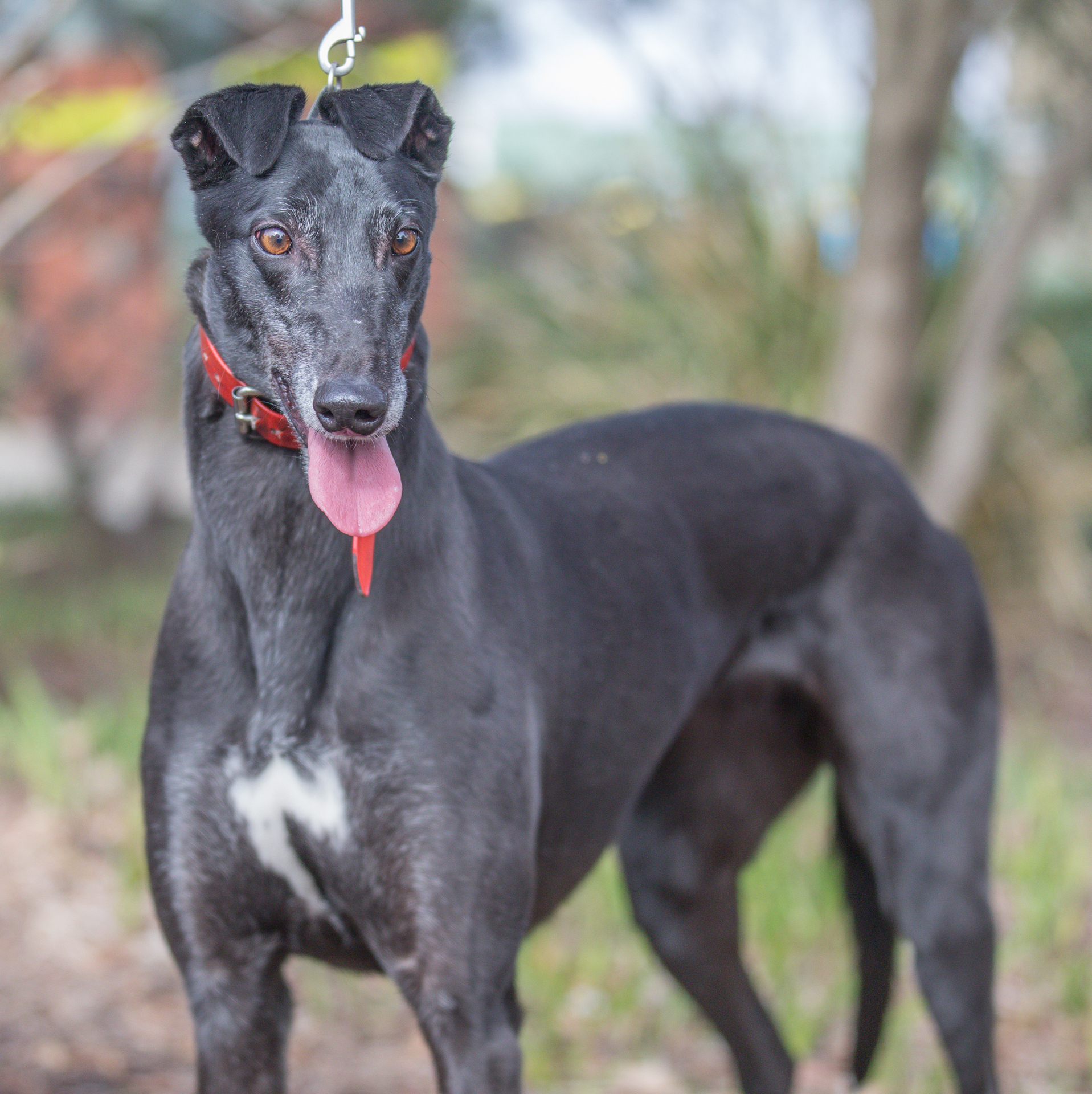
Shiny
Meet Shiny, the sparkling gem of a greyhound who's sure to brighten up your life! This quiet and gentle soul is a sweet and affectionate girl who loves people and adores treats. Shiny's a laid-back companion who'll fit right into your daily routine, bringing joy and calm to your home. Shiny may be suited to a household with kids aged 5+ and for a home with either no other dogs or a male canine companion that gets along with her gentle nature. She also might be a great fit for elderly owners or apartment living,as she's low-maintenance and doesn't require a lot of space. And, surprisingly, Shiny might even live harmoniously with a cat! If you're ready for a loving and gentle companion, Shiny might be the perfect fit for your family.
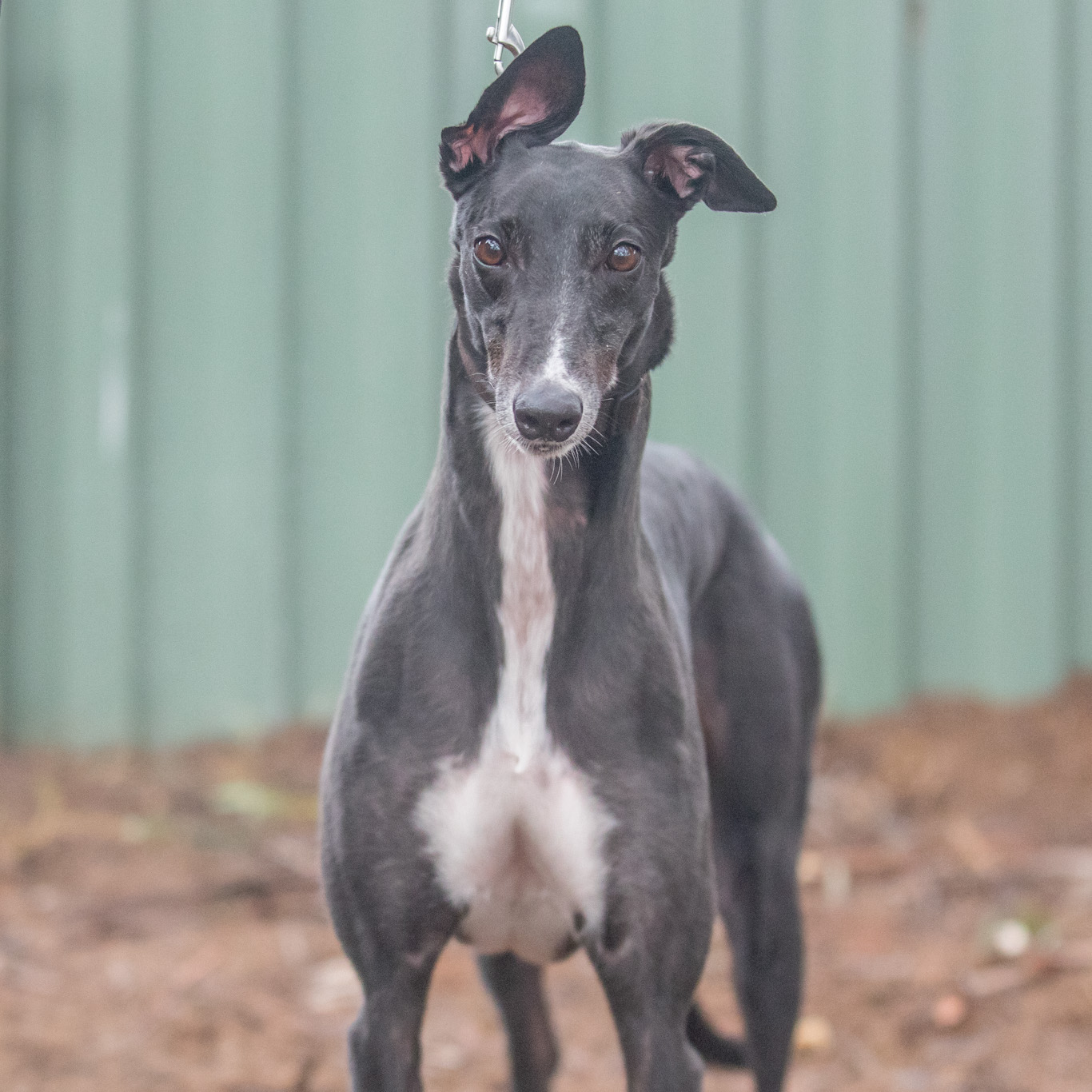
Trixie
Trixie is full of tricks! Well not yet but we know she is a smart cookie that will pick up on things very quickly, maybe even get up to some mischief if she catches you napping on the job of Greyhound Servant! We think this beautiful, affectionate and sweet little girl may be ok for families with children 10 and over and another male canine companion of any size, she may even suit living with a feline friend! Go Trixie!
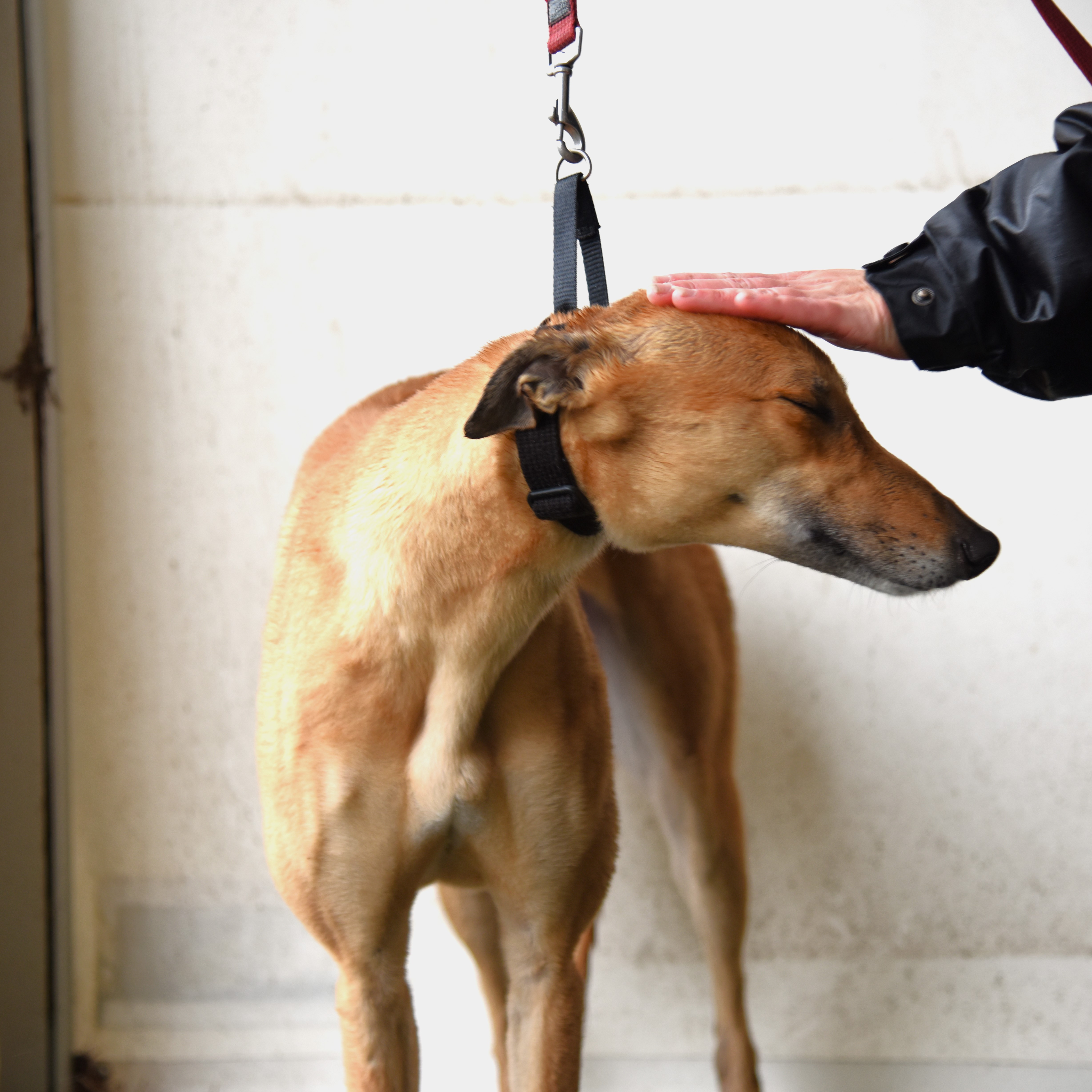
Ravioli
This delicious girl has her eyeliner on and is ready to hit the streets and show off her glamourous looks! Maybe even stopping for a bite to eat at your favourite Italian spot! Miss Ravioli is not only beautiful, she is sweet, kind and affectionate. She can be a little reserved at first but soon warms up and leans in for a cuddle. We think she may suit living with children10 and over and maybe even another medium or larger male canine for company. We also think she would be best off in a home that has a yard as she is still only young and can take her time to adjust to new environments.
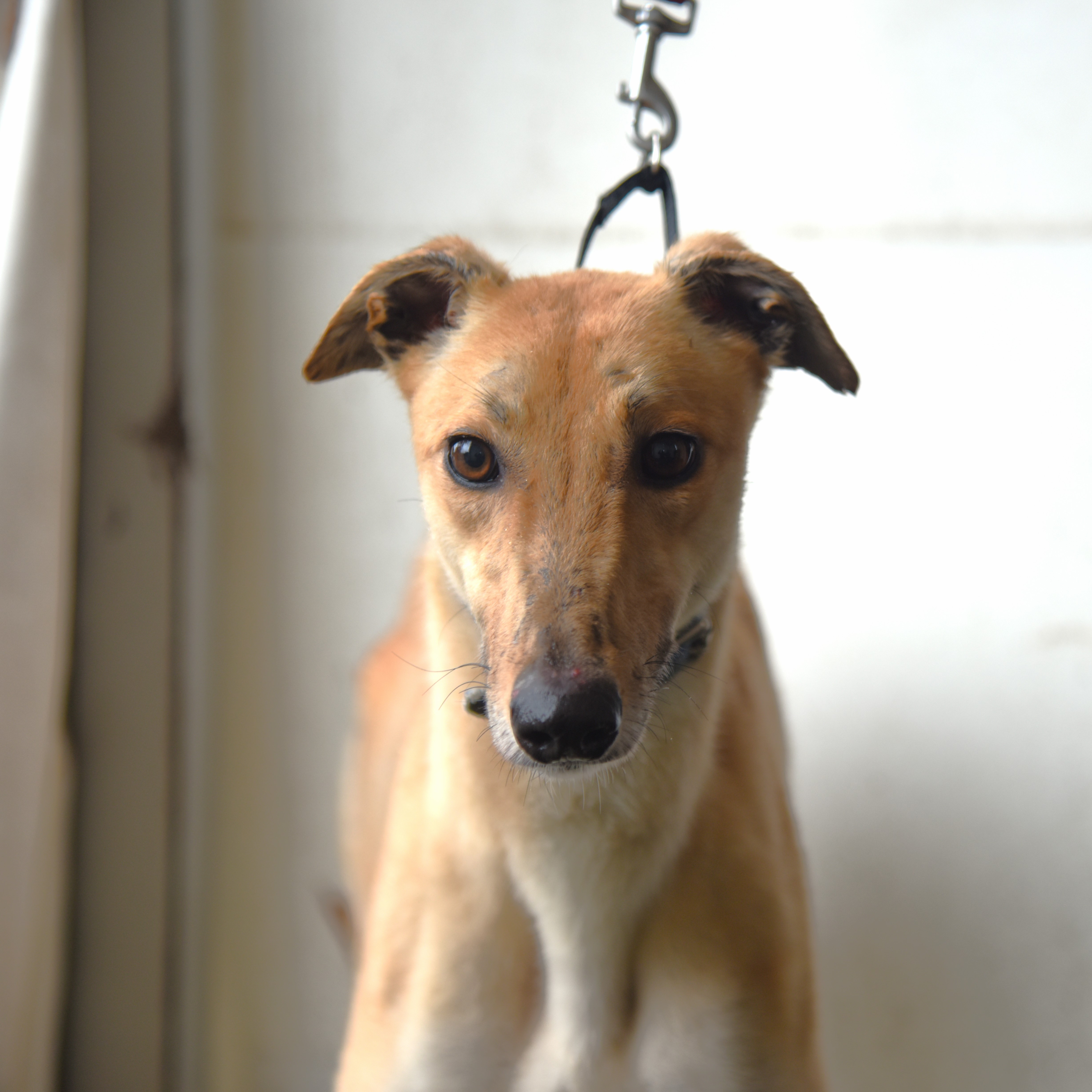
Shell
This sweet little girl is Shell, and she is one that will need to come out of her “shell” a little when she goes into her forever home. But she will blossom as a sweet, puppyish girl that is excitable and bubbly when she is comfortable. We think she may suit living as an only dog or with another medium to large male canine companion and somewhere




_51505627.jpg)


.jpg)

